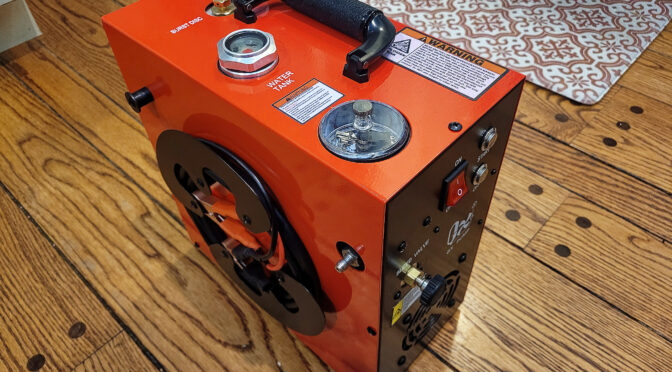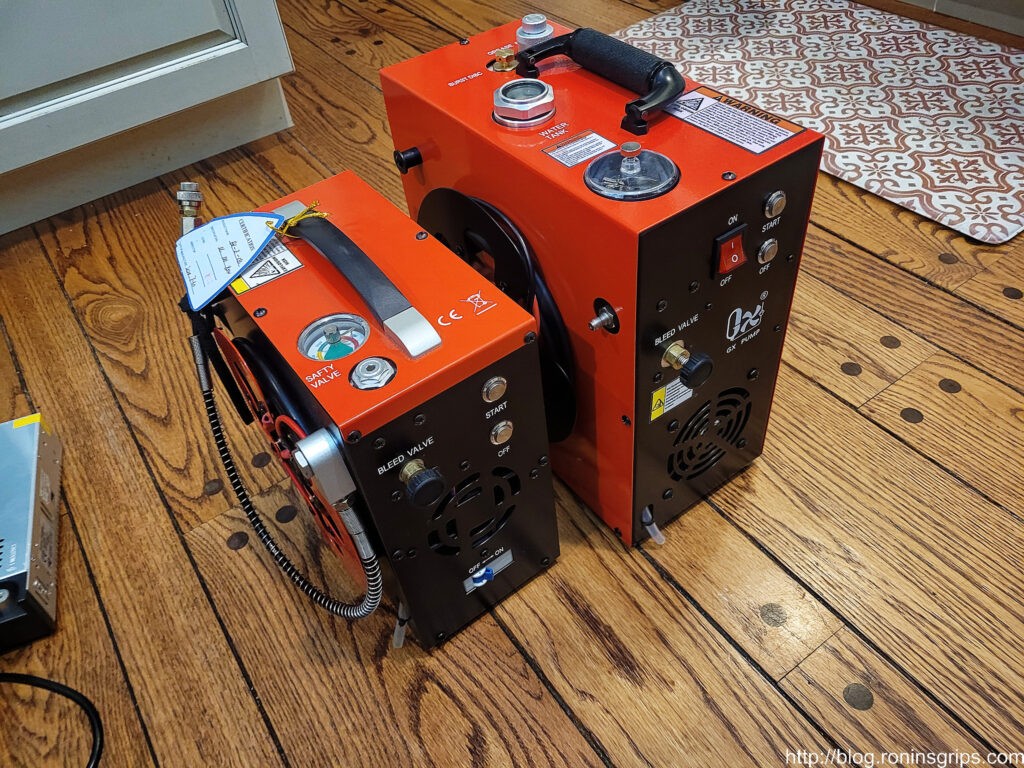Life is a funny thing – I grew up with firearms. Yeah, my dad had these two old pump action Daisy airguns that were fun to shoot tin cans with but starting at a pretty early age I liked things that went “bang”! Sometime in the early 2000s, I got back into airguns to deal with pests. I started hearing about a class of airguns called “pre-charged pneumatics” (PCPs) that used 3,000 PSI high pressure air cylinders somewhere on the rifle to propel the pellet. They were reported to be accurate, reliable and capable of rapid repeating fire through through the use of a manually operated bolt and a magazine.
I thought that sounded so neat – especially the rapid follow up shots. What stopped me from buying one was that they had to be refilled from a SCUBA tank that was filled at a diving shop. Well, I eventually found out there were specialized hand pumps and you didn’t need to spend a fortune on a tank and hassles with going to the dive shop. I bought a Hill Mk.4 hand pump along with a .22 Hatsan Gladius Long that I used for a few years.
Along the way, I found out that high pressure air compressors were falling in price. Those things used to be well past a $1,000, large, noisy, heavy and there was just no way I could swing one. In the fall of 2020 while surfing around on Amazon, a very affordable high pressure air compressor was doing really well. It was affordable, getting great reviews, portable and I didn’t have to mess with all kinds of oils and ice water cooling baths. It was the CS3 air compressor from GX. I bought one for $529.99 on November 23, 2022 – Amazon is cool in that I can search order history and pull up dates that I would have forgotten otherwise.
I wrote a post about buying it and also one about setting it up and testing it. I almost always used the CS3 to top off a really nice little Omni 18 cubic foot tank that I would then use to fill my growing number of PCP airguns. It really worked well – the tank was really convenient to pull out and top off an airgun and I would only occasionally need to bring out the CS3. Sure, I could have filled the airguns directly from the CS3 but I wanted to keep things simple.
Fast forward to January 2023 – I bought a .30 Umarex Gauntlet with a big cylinder and was planning to get one or two other high air consumption PCP rifles in 2023 so I started thinking about how to feed them. It was a total coincidence that GX unveiled their next generation CS4 compressor on Amazon. There were just a few four or five reviews at the time and I decided to gamble on the new pump and bought it on January 29, 2023. I took the leap because I had such a positive experience with the CS3 and I knew I could return it to Amazon if it turned out to be a problem child. [Yes, I bought this so you are getting my honest observations – click here for the Amazon CS4 product page.]
On January 31, 2023 the Amazon driver brought be a big heavy cardboard box with the GX CS4 and I started getting my stuff together to do some testing plus a time slot to fill a big 6.8L carbon fiber tank from empty to 300bar which would take 2-3 hours I figured.
Now, I’m going to tell you something – it is slick. It is really, really slick. I’m telling you this so you take the time to read more in this post plus one about setting it up and testing it.
What is the GX CS4?
The CS4 is an additional pump offering from GX for people wanting to fill larger cylinders than the CS3. It also reflects design advancements to the CS3 unit – here are the features that really caught my eye:
| CS3 | CS4 | |
| Working Pressure (Mfg supplied) | 30MPa/300 bar (4,351 PSI) | 40MPa/400 bar (5,801 PSI) – 33% more pressure |
| Air volume (Mfg supplied) | 7 liters/minute (0.247 cubic feet/min) | 11 liters/min (0.388 cubic feet/min) – 57% more air volume output |
| Suggested Maximum Air Cylinder Size | 2.5 Liters | 6.8 Liters |
| Cooling | Air with fans | Coolant with radiator and fan |
| Power (Mfg supplied) | 12V 250 Watts | 12V 350 Watts – 40% more watts |
| Duty Cycle (Mfg supplied) | 30 minutes working and 20 minutes cooling | 5 hours continuously working. Manual says to let it run for 1-2 minutes after pumping is complete – 10x longer duty cycle. |
| Sound Level (Mfg supplied) | 75db | 70db |
| Pump lubrication | Not needed (until it slows down – mine hasn’t so far) | Has a grease pot to add grease every 4-6 hours of run time |
| Limit switch | Simple rotary dial limit switch | Protected twin pin design where you can set both the limit and failsafe limit |
| Hose | 19.6″ permanently attached hose | 19.6 hose that is removable via a quick connect foster fitting |
| Weight (my digital scale) | 19.4 pounds | 29 pounds with antifreeze – 55% heavier |
| Dimensions (me with a tape measure) | 5-3/8″ wide (about 5-7/8″ wide including the wire spool on the side) x 9-1/2″ deep (10-1/4″ if you include the release valve) x 10-1/2 high at the top of the case (about 11-1/2 overall if you include the handle) | 6″wide case (6-1/2″ wide with the wire spool) x 11-78 deep (12-3/4 if you include the release valve) x 12-1/2″ at the top of the case (about 13-1/2 at either the top of the grease pot or the folded handle) – about 62% larger overall |
For me, the really long duty cycle is what I was looking for. The 57% increase in air output is a welcome enhancement to have over the CS3. Since I would fill my guns from my tank, I was never in a rush. Now that I have 6.8L tank, the fills will probably be less often but a lot more volume will be needed so it’s good to get that increase.
The increase in air pressure is overkill right now – there aren’t affordable 400 bar working pressure tanks as of yet – they are out there for specialty applications but are in the $1,500-2500 range. I’m sure the price will come down over time but most carbon fiber air tanks that PCP shooters are using are in the 300-310 bar working pressure range. If you see 400 bar, read the ad again because they may be talking about the test pressure and not the working pressure – you fill to the working pressure only – never to the test limit.
To be clear, the GX CS4 is not replacing the CS3. They have added the CS4 to fill larger tanks faster. They identify the 6.8 liter tanks as being the target max size for the CS4 and for me the duty cycle is the more important number. You can fill anything you want as long as you don’t bake the pump.
With the CS3 for example, the 20 minute duty cycle is what limits a convenient tank size. If I needed to fill my Omni 100 cu in (1.64 liter) tank from empty – I would let it run for 20 minutes and then I would stop the pump but let the fan run until it cooled down to room temp. I’d then close the cylinder valve, bleed the air out of the line, start the air pump again and as it came up to speed I would open the cylinder’s valve again. It took a while but it worked just fine. I tried to always be mindful of the duty cycle and give the unit a chance too cool down before I either shut it off or resume – I’m sure that’s one reason I’ve had zero problems with the CS3 since I bought it.
A five hour duty cycle with the CS4 is pretty amazing. I’ll tell you more about it when we get into the setup and testing.
Out of the Box Pictures
Let’s take a look here:
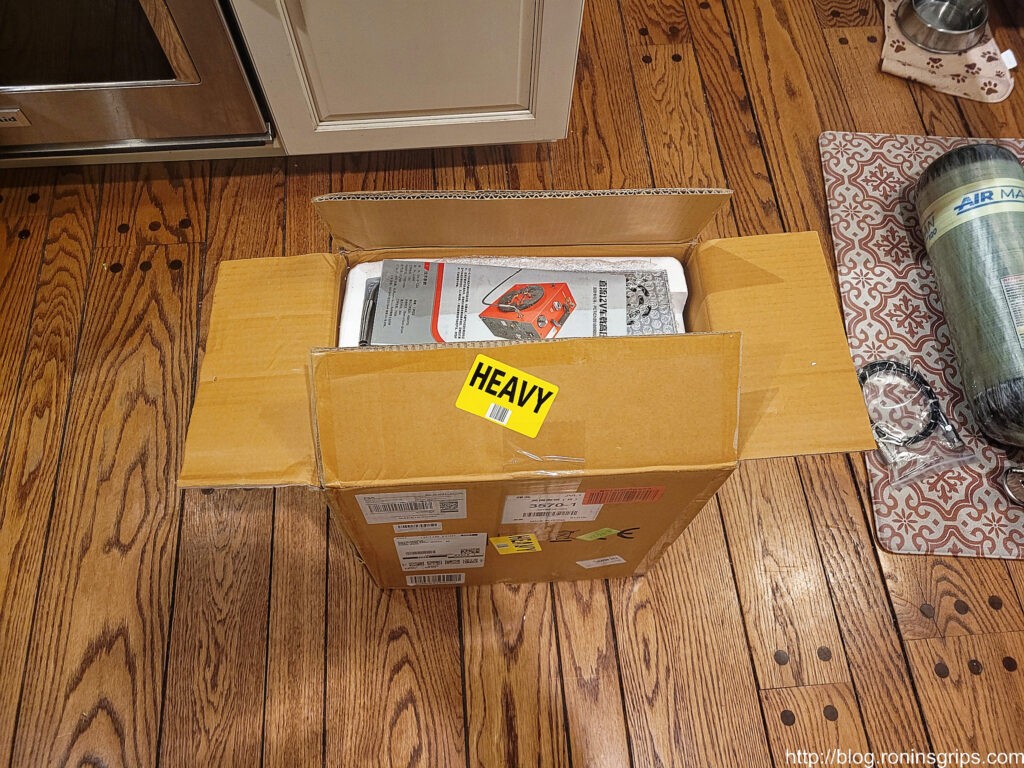
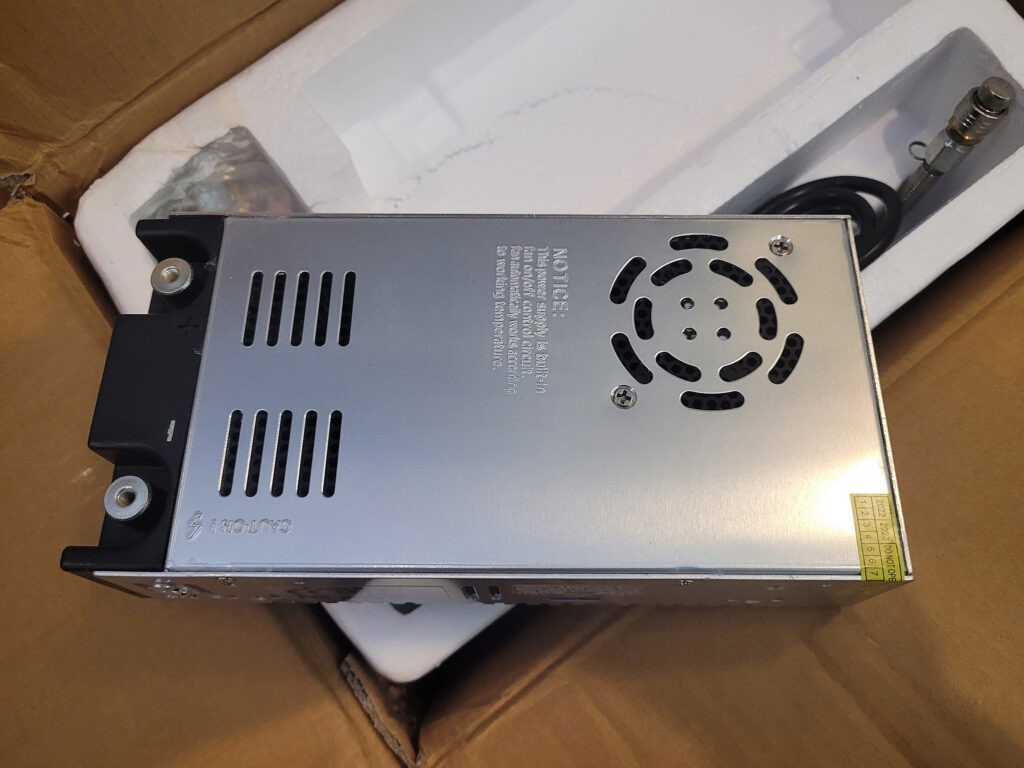
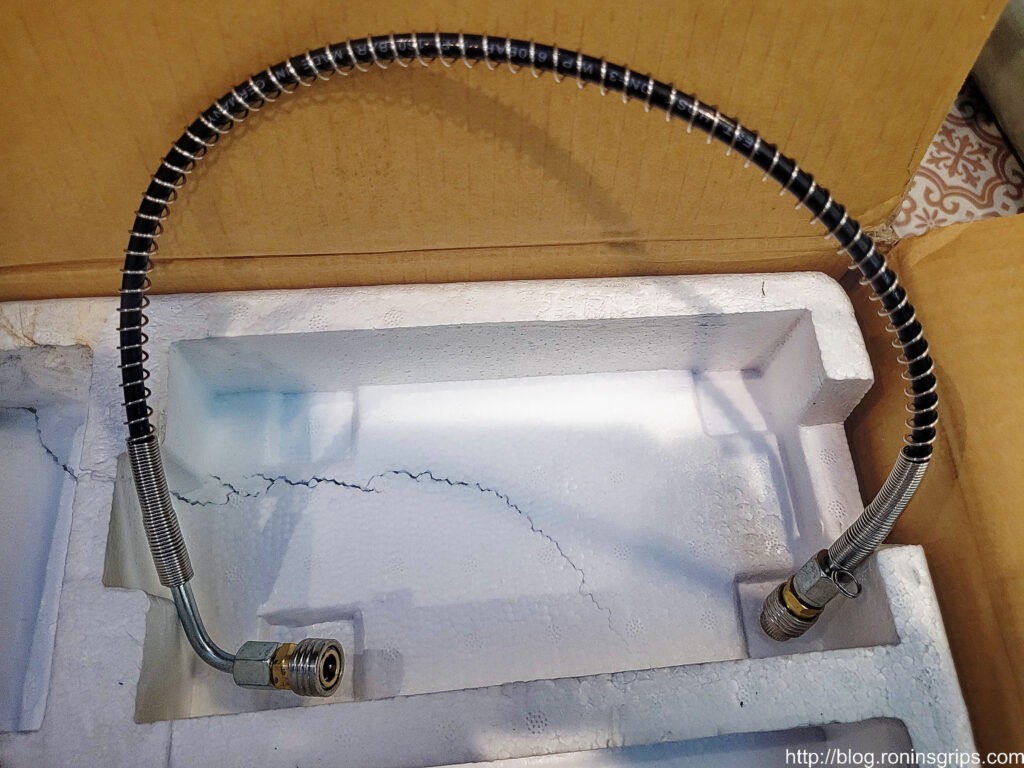
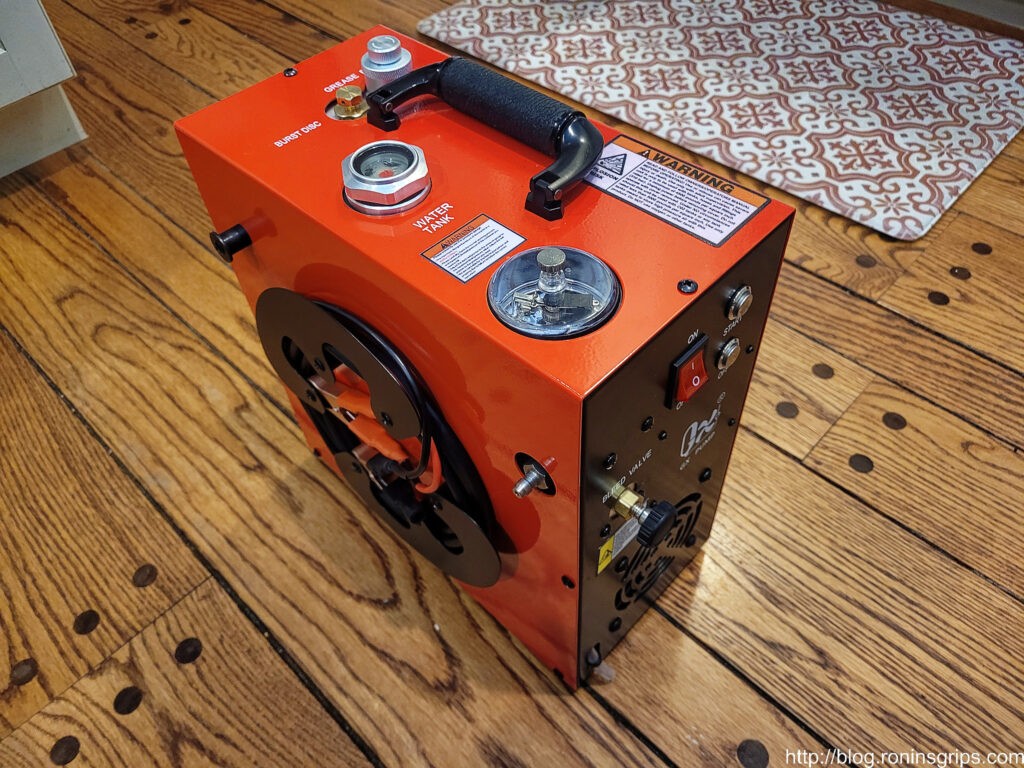

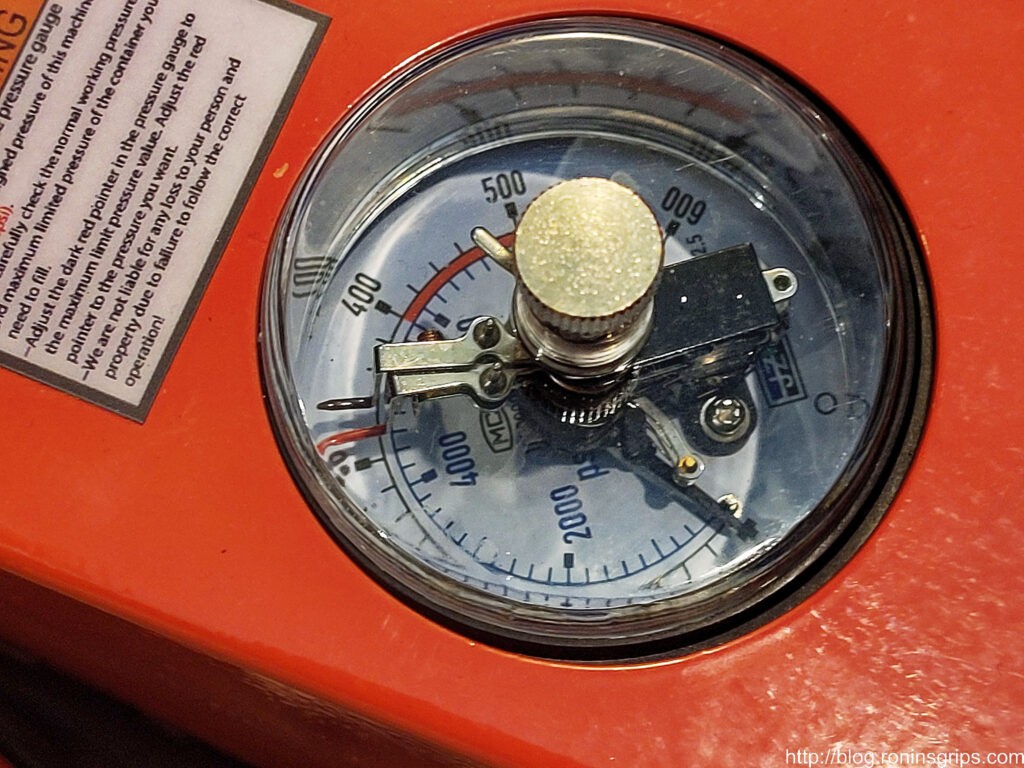

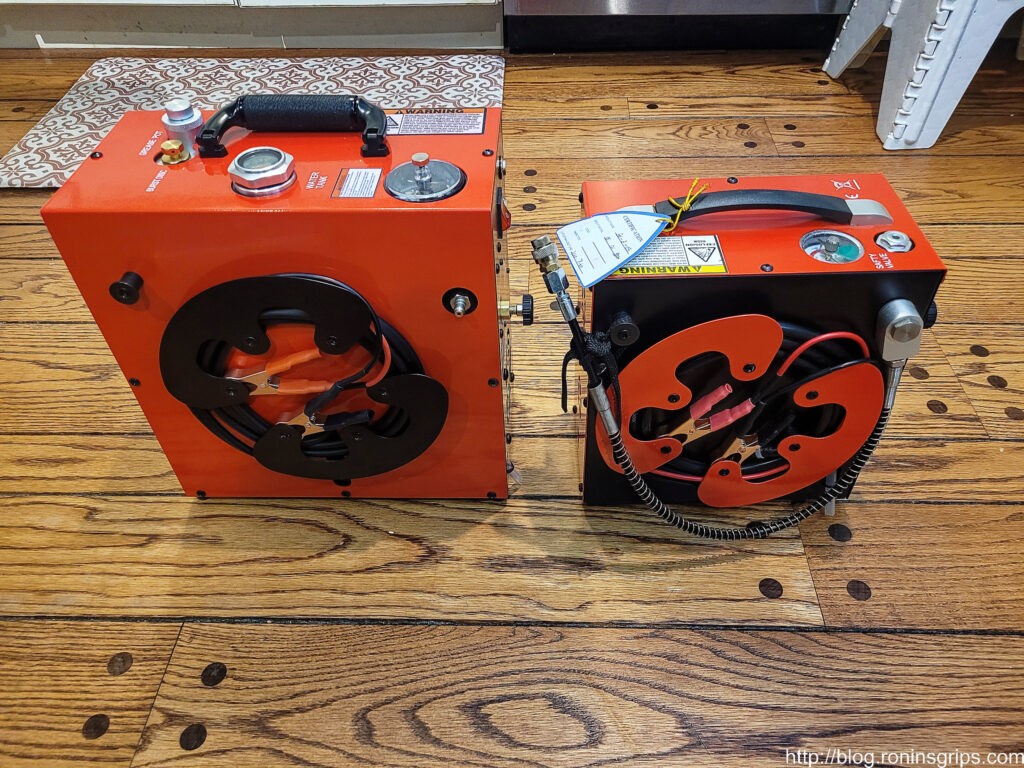
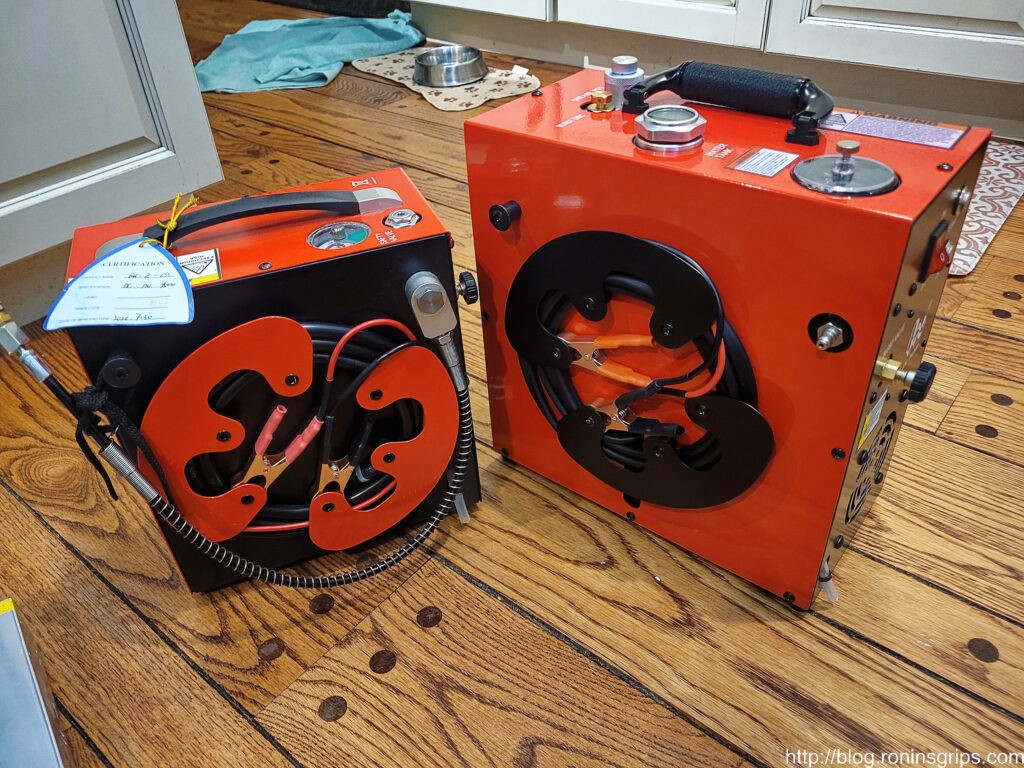
Here are the GX compressors from the CS4 down to the CS1
- GX CS4 – 6.8L tanks, fluid cooled, longer run time, 5800 PSI/40Mpa – External 12 volt power supply [My current compressor]
- GX CS3 – 1 liter tanks, air cooled, 4500 PSI/30Mpa – External 12 volt power supply [I used this and now my friend has it]
- GX CS3-I – 1 liter tanks, air cooled, 4500 PSI/30Mpa – Internal power supply [I used the regular CS3 but they are the same other than the power supply]
- GX CS2 – .5 liter tanks, air cooled, 4500PSI/30Mpa – 12 volt or 110 AC [I have not used this one]
- GX CS1-I – .5 liter tank, air cooled, , 4500PSI/30Mpa, 12 volt or 110AC internal power supply [I have not used this one]
- FastToBuy 30Mpa Oil Water Filter – Not a GX product but I recommend this filter and you need one between the compressor and your tank or PCP airgun. You will need an extra hose from it to your tank or airgun plus the proper fittings.
Summary
The CS4 compressor is a great new product offering from GX. Click here to see it on Amazon.
In the next blog post I will walk you through setting the unit up and then testing. I’ve already done all of this so I’m telling you right now the CS4 is a solid unit. In the next post I’ll explain why I am so impressed along with what I did to set up and test it.
1/28/24 Update: Had to fix Amazon links so they work in the list above the summary. I’m still using my CS4. No problems.
6/12/23 Update: Fixed the wording about being conservative. Thanks KG!
Note, I have to buy all of my parts – nothing here was paid for by sponsors, etc. I do make a small amount if you click on an ad and buy something but that is it. You’re getting my real opinion on stuff.
If you find this post useful, please share the link on Facebook, with your friends, etc. Your support is much appreciated and if you have any feedback, please email me at in**@*********ps.com. Please note that for links to other websites, I may be paid via an affiliate program such as Avantlink, Impact, Amazon and eBay.
